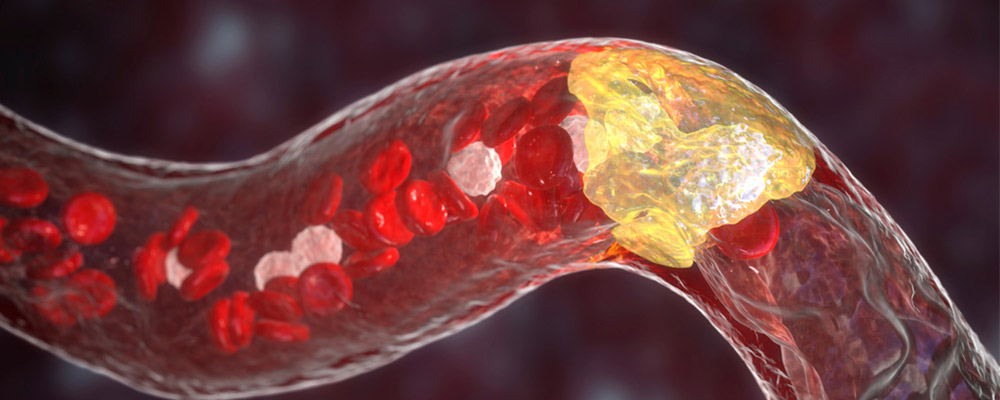Updated on April 4, 2023
Introduction
Arteries are specialized vessels in the body that carry oxygenated blood away from the heart to vital organs. In atherosclerosis, the arteries begin to narrow because of a buildup of plaque, preventing oxygen from reaching the organs. Atherosclerosis is one of the many types of arteriosclerosis that can make the arteries thick and stiff. Read on to learn more about atherosclerosis vs arteriosclerosis.
What is Atherosclerosis?
Atherosclerosis is a type of plaque buildup that takes a long time to develop. The plaque comprises substances like cholesterol and fat. With the continual deposition of plaque, the arteries become narrow. This hinders blood flow to the vital organs, compromising the oxygen supply.
Before comparing atherosclerosis vs arteriosclerosis, let’s learn about arteriosclerosis.
What is Arteriosclerosis?
In arteriosclerosis, the walls of the arteries become hard and stiff. Resultantly, the blood pressure rises because of the hindrance in blood pressure. Conversely, healthy arteries are flexible and can provide a good supply of oxygen-rich blood.
The different types of arteriosclerosis are:
- Nonatheromatous arteriosclerosis
- Mönkeberg’s arteriosclerosis
- Hyaline arteriolosclerosis
- Hyperplastic arteriolosclerosis
- Atherosclerosis
Now we shall look at the causes of atherosclerosis vs arteriosclerosis.
Atherosclerosis Causes
Atherosclerosis is primarily linked to endothelial cell damage. The endothelial cells make up the inner lining of the arteries. These cells comprise the inner lining of the arteries. This leads to inflammation and, eventually plaque development.
The next section will give you an idea about arteriosclerosis causes so that you can compare atherosclerosis vs arteriosclerosis.
Arteriosclerosis Causes
The arterial walls have elastin fiber proteins that make the walls of the arteries flexible and elastic.
The elastic fibers are damaged when exposed to oxidation. Eventually, they break apart and fray, disrupting the structural arrangement of the elastin fibers. Resultantly, the walls of the arteries become stiff, causing arteriosclerosis.
Continue reading to find out about the signs of atherosclerosis vs arteriosclerosis.
What are the Signs of Atherosclerosis?
Just like with arteriosclerosis, many people are unaware that they have atherosclerosis until they suffer a heart attack.
One might experience some signs of atherosclerosis which include:
- Angina — or chest pain
- Shortness of breath
- Weakness
- Tiredness
- Lightheadedness
If you have these symptoms accompanied by hypercholesteremia (high cholesterol) or hypertension (high blood pressure), your Cardiologist might suggest tests for atherosclerosis. To make a just comparison of atherosclerosis vs arteriosclerosis, let’s explore the warning signs of arteriosclerosis.
What are the Warning Signs of Arteriosclerosis?
Many people are unaware of the fact that they have atherosclerosis until they suffer a health emergency like a heart attack or aneurysm. In an aneurysm, the arterial walls weaken and bulge.
The signs and symptoms of arteriosclerosis may include:
- Chest pain
- Shortness of breath
- Sweating
- Pain in your arm or shoulder
- Feeling sick
- Coughing
- Lightheadedness
- Severe headaches
- Trouble speaking
- Vision problems
- Leg pain
Now we shall look at the treatment options for atherosclerosis vs arteriosclerosis.
What Is the Treatment for Atherosclerosis?
General guidelines for atherosclerosis vs arteriosclerosis are somewhat similar. Treatment for atherosclerosis entails lifestyle and dietary adjustments just as for arteriosclerosis. Your doctor may recommend medication as well as surgical or nonsurgical treatments.
-
Medications:
Depending on your health, your doctor may prescribe cholesterol-lowering drugs and blood thinners to avoid blood clots and lower blood pressure.
-
Angioplasty:
A coronary angioplasty with or without a stent is a frequent therapy for atherosclerosis. Your surgeon will put a catheter with a balloon on the end into your artery to open it up. A metal coil called a stent is sometimes inserted in your artery to reinforce the arterial walls and keep them open.
-
Bypass surgery:
If your coronary arteries are severely blocked, you may require coronary artery bypass surgery. A section of your leg’s artery will be connected to your heart’s arterial network, creating a new clear, and powerful artery for blood to flow through.
By going through the next section, one may be able to compare treatments of atherosclerosis vs arteriosclerosis.
What Is the Treatment for Arteriosclerosis?
There are multiple treatment modalities of arteriosclerosis treatment. Your doctor will most likely recommend lifestyle changes depending on the kind and severity of the condition:
- Regular exercise
- A healthy diet
- Keeping a healthy weight
- Stopping smoking
- Drinking less alcohol
They may also recommend medications that include:
- Angiotensin-converting enzyme inhibitors — or ACE inhibitors
- Beta-blockers
- Diuretics
- Calcium channel blockers
- Vasodilators
The risk factors for atherosclerosis vs arteriosclerosis are compared below.
Atherosclerosis Risk Factors
The risk factors for atherosclerosis include:
- Aging
- Family history of atherosclerosis
- High blood cholesterol levels
- High blood pressure
- Smoking tobacco
- High saturated fat intake
- Diabetes
Some of the risk factors for atherosclerosis vs arteriosclerosis are similar but others may be different.
Arteriosclerosis Risk Factors
The biggest risk factor for arteriosclerosis is aging. Elastin fibers naturally lose elasticity over time. This causes your arteries to stiffen and harden, potentially leading to arteriosclerosis. The stiffness of arteries significantly increases after the age of 55. Atherosclerosis raises the risk of hypertension, which can exacerbate atherosclerosis and other health problems.
Diagnosing Atherosclerosis vs Arteriosclerosis
In order to diagnose atherosclerosis vs arteriosclerosis, a doctor will suggest the following tests:
-
Physical exam:
A physical examination allows a doctor to identify physical symptoms, such as a fast heart rate.
-
Blood pressure:
High blood pressure can indicate if arteriosclerosis has developed or if you are at an increased risk of atherosclerosis.
-
Family history:
Knowing family history is imperative in diagnosing a condition and so your doctor will ask about your family history.
-
Blood tests:
Blood tests allow your healthcare provider to check for atherosclerosis risk factors like high triglycerides, high cholesterol, and even diabetes.
Discerning atherosclerosis vs arteriosclerosis is not easy but possible.
When to Contact a Doctor?
Atherosclerosis and arteriosclerosis seldom elicit symptoms until they have progressed to other health problems. As a result, it’s a good idea to go to the doctor or a Cardiologist for yearly physicals. These routine examinations will enable your doctor to identify whether you are at risk of getting either ailment. Also, you’ll be able to begin treating the illness before it worsens.
It is probably a good idea to see a doctor if you have:
- A family history
- Chest pain
- Dizziness
- Increased heart rate
- Shortness of breath
- Unexplained fatigue
- Cold sweats
- Difficulty breathing
Also read: Permissive Hypertension: Guide to Ischemic Stroke Recovery
Takeaway
When looking at atherosclerosis vs arteriosclerosis we need to understand that they are different conditions. Atherosclerosis is a type of arteriosclerosis. In atherosclerosis, there is a gradual buildup of plaque in the arteries. On the other hand, arteriosclerosis is caused by inflammation and eventually leads to stiffness in the arteries. Arteriosclerosis is caused by elastin fibers in your arteries losing elasticity.
Both of these conditions are symptomless until they manifest as serious conditions. So, it is best to prevent them from happening in the first place by visiting your doctor regularly. At Revival Research Institute, we are conducting clinical trials on people who have cardiovascular disease and high cholesterol. These new investigational drugs are aimed at preventing heart disease by lowering blood cholesterol.





